Scotland Right To Roam Camping - What Is It And What Are The Rules?
Scotland's right-to-roam camping regulations are one of the main reasons this country is such an amazing destination for outdoor lovers. Outdoor enthusiasts travel here from all over the UK and further afield, often to combine camping with a canoeing or kayaking trip.
Basically, right-to-roam camping means you can pitch your tent wherever you want in the wilderness and legally camp there for the night. This means you can go hiking or canoeing in Scotland, set up camp in the most beautiful remote areas, and continue your adventure the next day.
Scotland’s right-to-roam laws form a huge part of the country’s appreciation for its natural environment. However, it's important that you understand the specifics of the right to roam camping and where you can and can't do it. We’ll explore it all in the guide below.
What is Scotland's Right to Roam Camping?
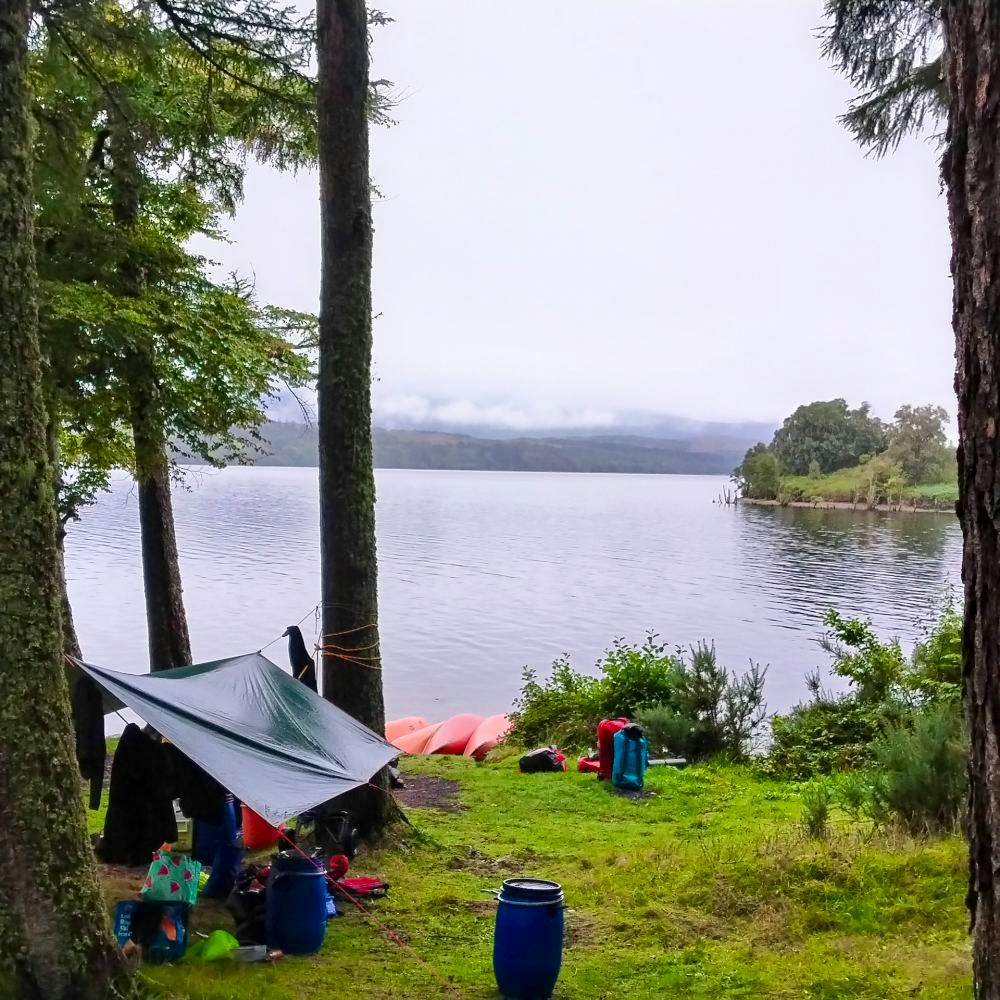
Scotland's Right to Roam, also known as the Scottish Outdoor Access Code, is a legal framework that grants people the right to access and enjoy the outdoors in Scotland. This includes the right to camp in most unenclosed land.
This legal right, which came into effect in 2005 under the Land Reform (Scotland) Act 2003, allows individuals to camp responsibly on open land, as long as they follow certain guidelines outlined in the Access Code.
This right to roam and camp is a reflection of Scotland's commitment to preserving its natural heritage and allowing people to experience the country's stunning landscapes and wilderness.
While the Right to Roam allows for camping on most unenclosed land, it comes with responsibilities, such as respecting local communities, and ensuring that camping is done in a sustainable and considerate manner. Campers are encouraged to adhere to the "Leave No Trace" principles, which emphasize minimizing impact on the environment.
Scotland's Right to Roam Camping is a unique and valuable opportunity for outdoor enthusiasts to connect with nature and experience the country's breathtaking landscapes while promoting responsible and sustainable outdoor activities.
Where is Right to Roam Camping Scotland Allowed and Not Allowed?
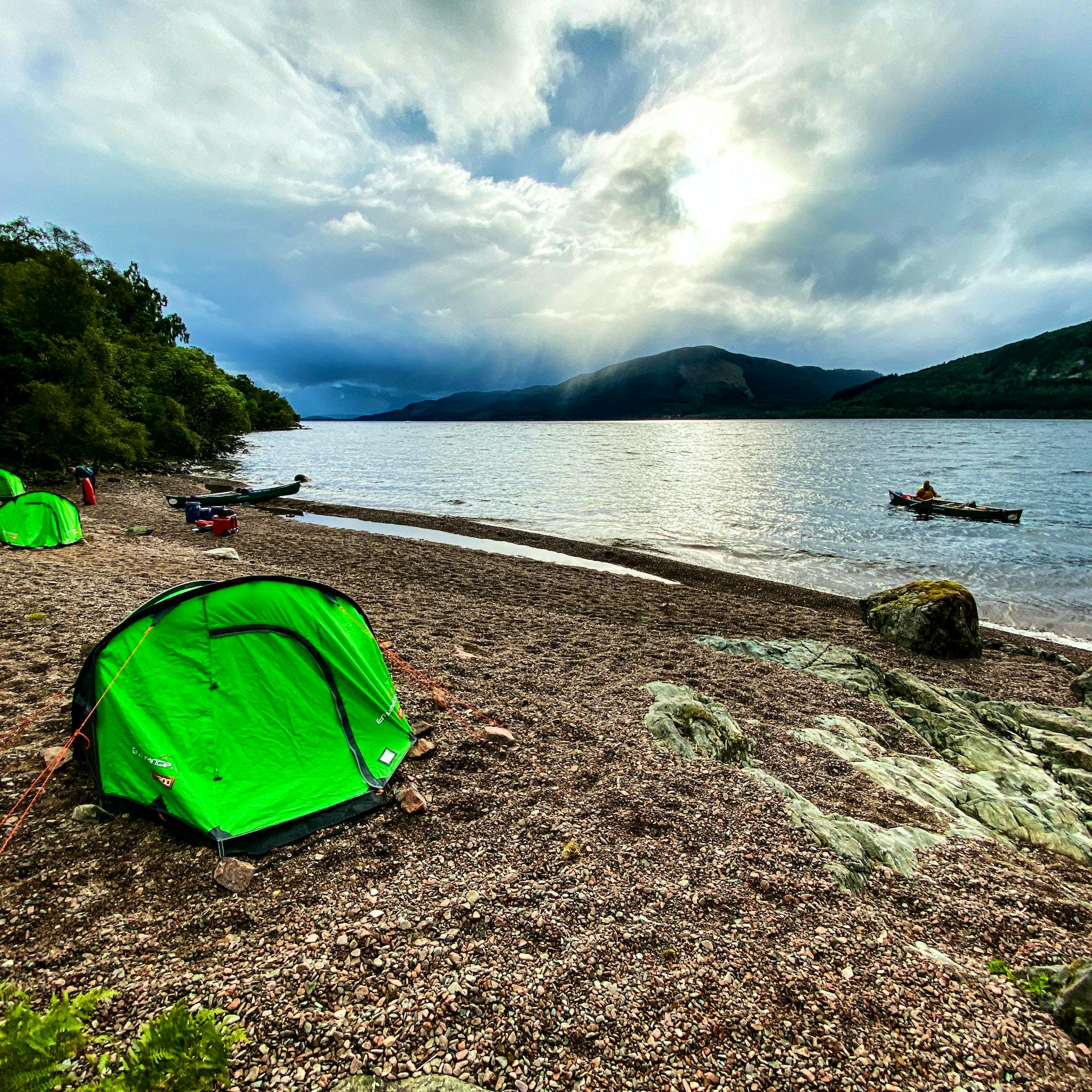
In Scotland, the Right to Roam Camping is allowed on most unenclosed land, which includes open moorland, forests, fields, and some coastal areas. However, there are certain restrictions and considerations to be aware of.
Where Can You Camp?
You can generally camp on most unenclosed land in Scotland, as long as you follow the principles of responsible access.
This includes minimizing your impact on the environment, respecting local communities, and following the Leave No Trace principles.
It's important to be considerate of other outdoor enthusiasts and wildlife when choosing a camping spot.
Where Can’t You Camp?
Camping is not permitted on enclosed farmland, cultivated fields, or land around houses. You should also avoid camping in sensitive areas like nature reserves, military areas, and certain protected sites, which may have their own rules and regulations.
Additionally, it's crucial to respect the rights and wishes of landowners. So, if you're unsure whether camping is allowed in a particular area, seek permission from the landowner if possible.
The key to enjoying Right to Roam Camping in Scotland is to be a responsible and considerate camper, ensuring that you leave no trace and respect both the natural environment and the rights of others.
Always check for any local guidelines or restrictions, especially in more sensitive or protected areas.
Scotland Right to Roam Camping Rules
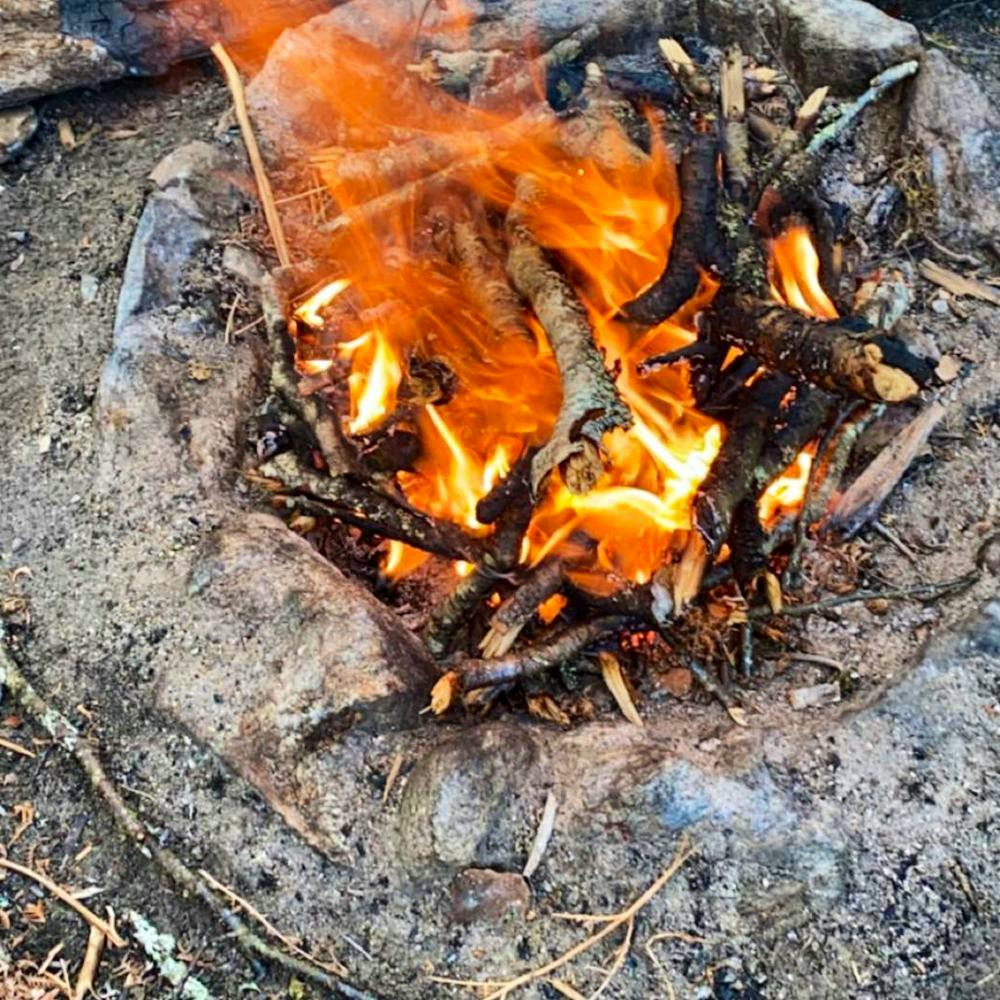
To ensure a positive and sustainable outdoor experience with Scotland's right to roam camping, it's important to follow these guidelines.
Responsible Access
Exercise your access rights responsibly. This includes respecting the environment, wildlife, and other people.
Always follow the "Leave No Trace" principles, which means leaving your camping spot as you found it, taking your litter with you, and not damaging vegetation or disturbing wildlife.
Camping Spots
When choosing a camping spot, select a location that is at least 200 meters away from houses, buildings, and roads. This helps maintain privacy for residents and ensures your camping does not impact their daily lives.
Group Size
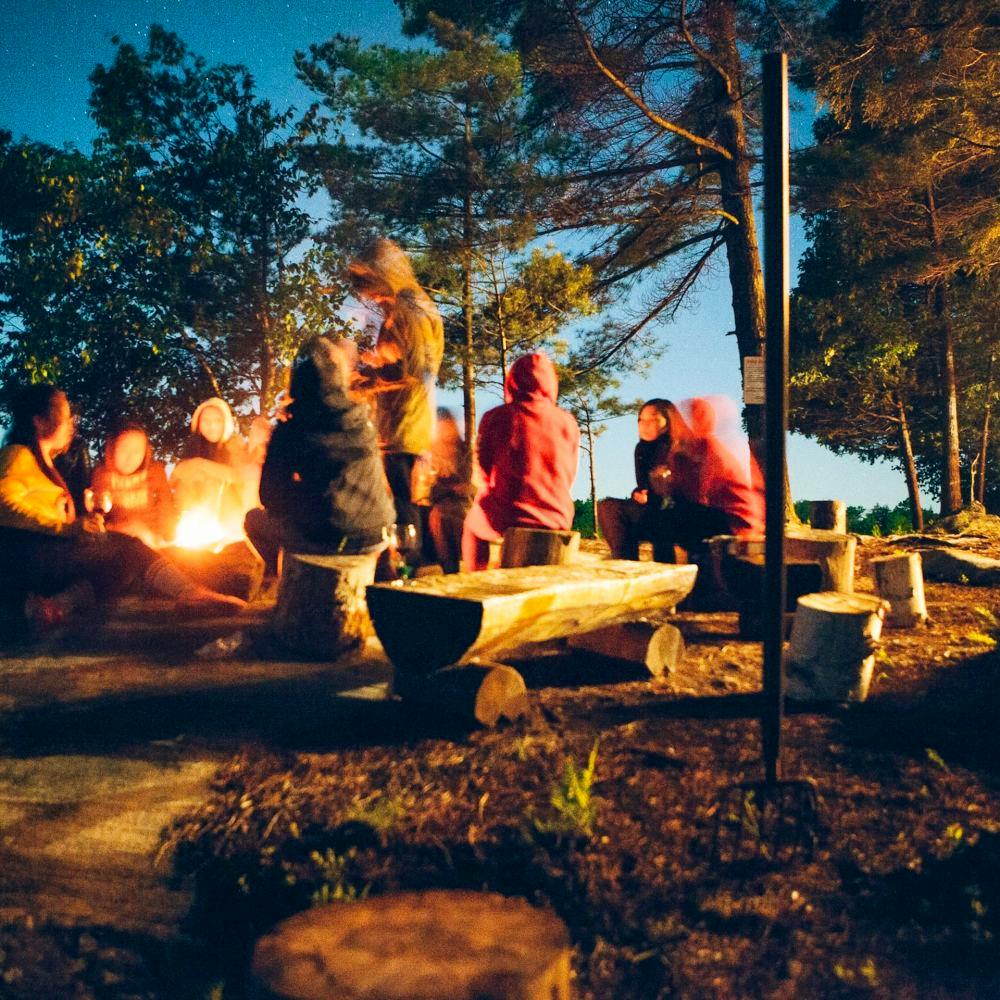
Keep your group size small and manageable. Larger groups can have a more significant impact on the environment and may be disruptive to others. Be mindful of your noise and activities, especially at night.
Campfires
Open fires can be damaging to the environment. Use a camping stove for cooking, and avoid lighting fires unless you have the landowner's permission.
If fires are allowed, follow local guidance on fire safety and ensure they are well-contained and safely extinguished.
Sanitation
Use a portable toilet or follow best practices for digging a small hole (cat hole) for human waste disposal.
Always pack out used toilet paper and sanitary items. Never leave waste exposed on the ground.
Litter
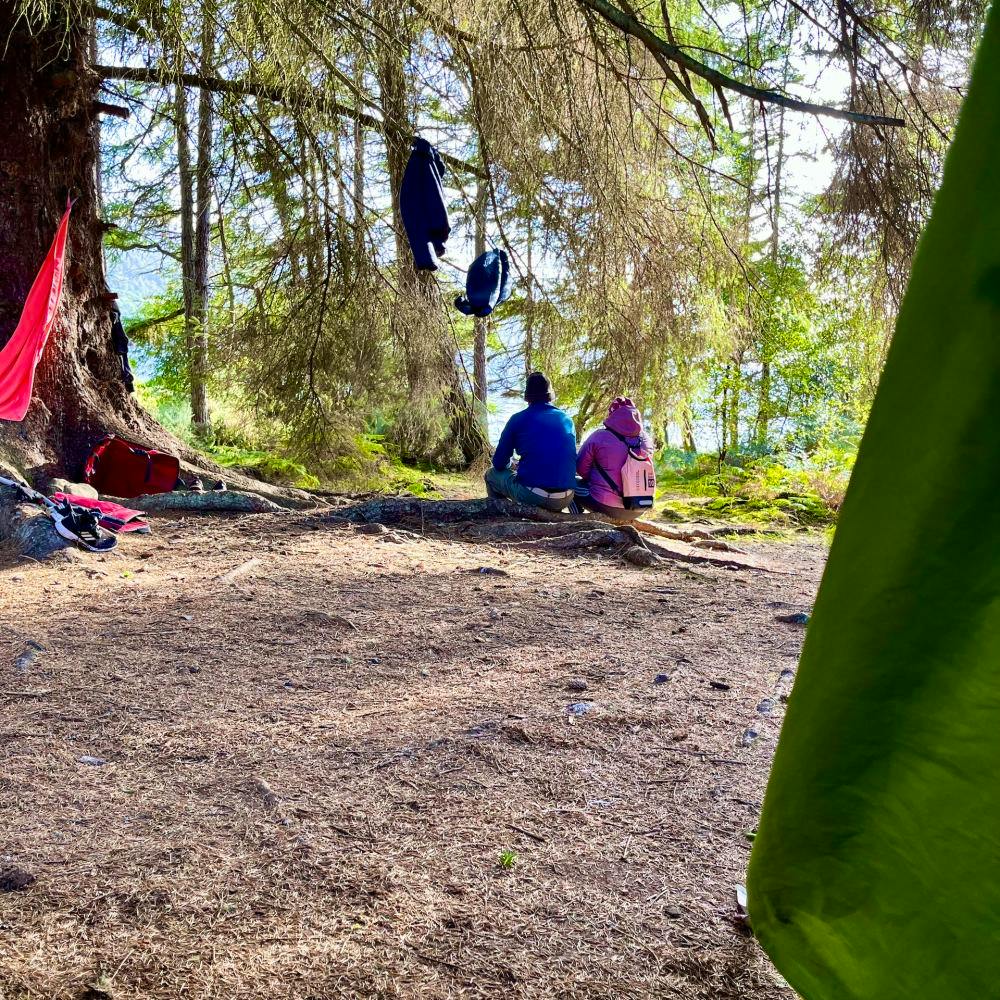
Carry all your litter with you and dispose of it responsibly. This includes food wrappers, containers, and any other waste you generate while camping. Only leave your footprints!
Wildlife and Nature
Be respectful of wildlife and their habitats. Do not disturb or feed animals, and keep a safe distance.
Stick to established paths and tracks to minimize your impact on sensitive ecosystems.
Noise and Music
Keep noise levels to a minimum, especially during the night. Sound can travel far in open landscapes, so be considerate of the tranquillity of the outdoors.
Landowner's Rights
Respect the rights of landowners and local communities. If you're uncertain about camping in a specific area, seek permission from the landowner or consult local guidelines.

Latest Deals
Temporary Stay
Your right to camp is based on temporary access. Do not set up permanent structures or camp in the same spot for an extended period.
By adhering to these rules and being a responsible camper, you can enjoy the beauty of Scotland's landscapes while preserving the environment and respecting the rights of others.
Best Practices for Wild Camping in Scotland
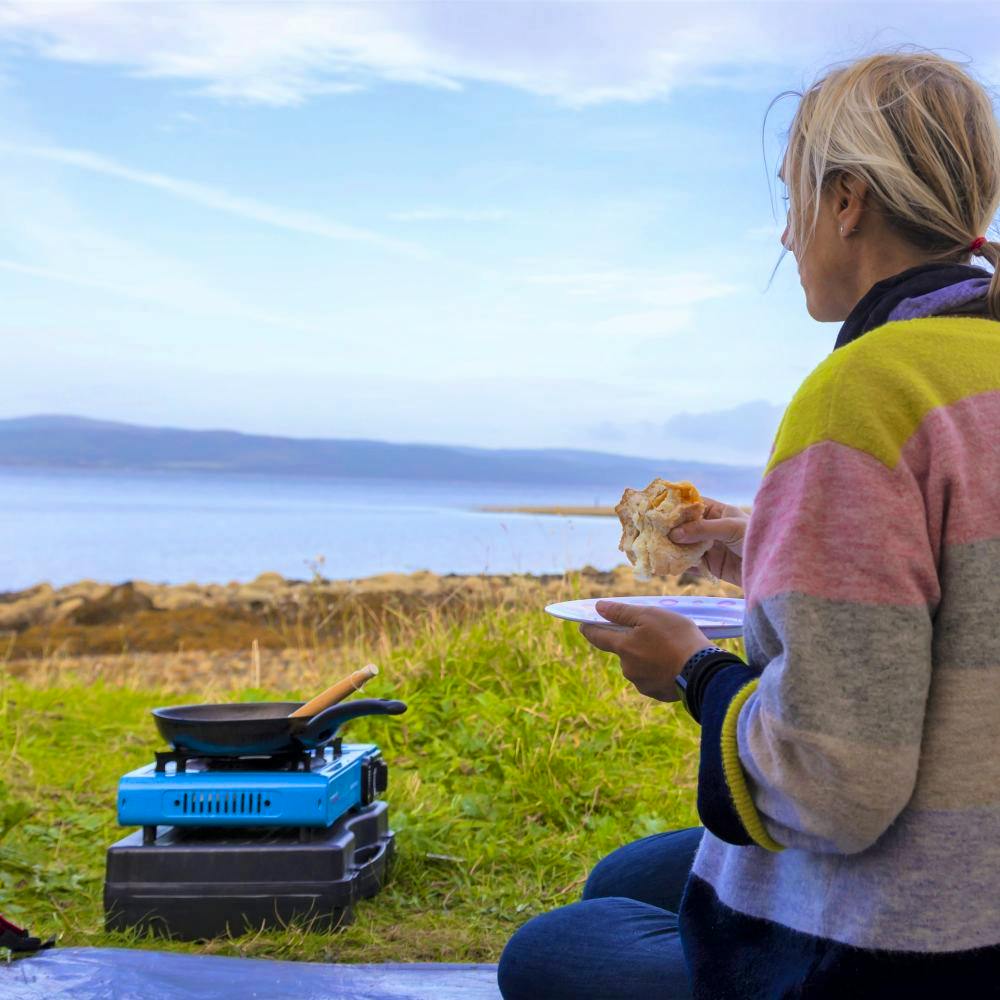
Scotland right to roam camping lets you enjoy the true magic of this country’s rugged nature. However, you need to make sure you're properly prepared to make the most of your Scotland wild camping experience.
Here are a few tips and best practices to follow when doing right-to-roam camping in Scotland.
Plan and Prepare
Research the area you plan to camp in and check for any specific local regulations or restrictions.
Make sure you have the necessary equipment, clothing, and supplies for the conditions you'll encounter.
Weather Awareness
Scotland's weather can change rapidly, so be prepared for rain, wind, and temperature fluctuations. Bring appropriate clothing and gear to stay comfortable in all conditions.
Navigation Skills
Ensure you have good map-reading and navigation skills. This is especially important in remote areas where GPS signals may be weak.
Emergency Preparedness
Carry a means of communication, such as a mobile phone with extra battery power, in case of emergencies. Let someone know your plans and expected return time.
Food Storage
When camping in areas with wildlife, take precautions to store your food securely to prevent wildlife encounters. This helps protect both you and the animals.
Respect Local Culture
If you encounter local communities or traditional activities, be respectful and considerate. Engaging with locals can provide valuable insights into the area.
Camp Quietly
Maintain a low profile and keep noise to a minimum. This helps preserve the peacefulness of the natural surroundings and minimizes your impact on the environment.
If you encounter other wild campers, be considerate of their space and privacy. Keep a reasonable distance between camping parties to maintain a sense of solitude.
Water Source Awareness
Be aware of where to find water sources and carry a water purification method to ensure you have access to safe drinking water. If you are camping and loch canoeing in Scotland, you have a very accessible water source at your doorstep! Be sure to boil the water first before using it to cook or drink.
Leave No Trace Principles
Embrace and follow the Leave No Trace principles rigorously. This includes packing out all waste, not picking plants or disturbing wildlife, and leaving the campsite as you found it.
Tread Lightly
When hiking to your camping spot, stick to established paths and trails to minimize your impact on fragile ecosystems. Avoid trampling on sensitive vegetation.
Share Knowledge
If you see someone not following these best practices, kindly offer guidance and information on responsible wild camping. Educating others can help protect Scotland's natural environment for future generations.
Best Destinations for Scotland Right-to-Roam Camping
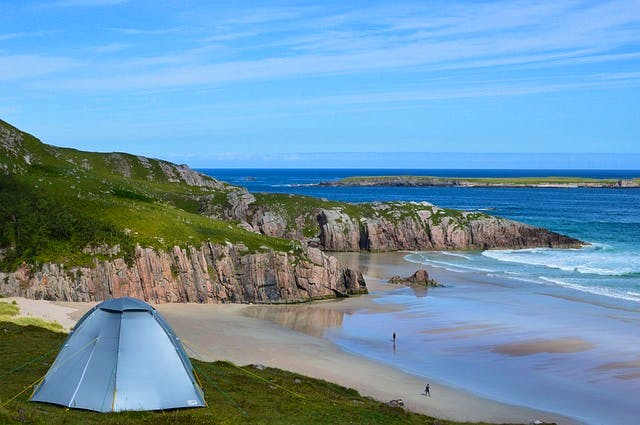
Scotland offers numerous stunning destinations for Right to Roam camping. Here are some of the best places to explore.
Loch Lomond and The Trossachs National Park
This park is a popular spot for wild camping, with a variety of lochs, mountains, and forests to choose from. Loch Lomond's eastern shore, in particular, is known for its beautiful camping spots. Loch camping in Scotland doesn't get better than this.
Cairngorms National Park
Scotland's largest national park boasts a diverse landscape of mountains, forests, and lochs. The areas around the Cairngorms and Glen Feshie are popular for wild camping.
Isle of Skye
Skye's dramatic landscapes, including the rugged Cuillin Mountains, make it a picturesque location for camping. The Fairy Pools and Glenbrittle are notable spots for camping on the island.
Glen Coe
The iconic Glen Coe and surrounding areas in the Highlands offer breathtaking scenery and numerous spots for wild camping. Be sure to follow the guidelines and respect the environment.
The West Highland Way
This long-distance hiking trail passes through some excellent camping areas. Locations along the way include the banks of Loch Lomond, Rannoch Moor, and Glencoe.
The Great Glen Way
Camping along the Caledonian Canal and the shores of Loch Ness offers a unique and serene experience. The Great Glen Way also makes for some of the best canoeing in Scotland.
Feeling adventurous? Skyhook offers a Canoe Across Scotland trip where you can paddle and wild camp all through the Great Glen Way.
The Orkney Islands
Explore the history and natural beauty of Orkney through wild camping. Remember that access to some areas may be restricted due to fragile ecosystems and archaeological sites.
The Outer Hebrides
These islands, including Harris and Lewis, offer remote and unspoiled landscapes for camping. Explore the beautiful beaches, machair, and historic sites.
Galloway Forest Park
In the southwest of Scotland, this park is designated as a Dark Sky Park, making it an excellent place for stargazing during your camping trip.
Ben Nevis
Camping near the UK's highest peak can be a memorable experience, but it's essential to be well-prepared for rapidly changing weather conditions.
When camping Ben Nevis, Scotland, make sure you come prepared and pay careful attention to the weather forecast. Whether you spend the night on the mountain’s peak or at the base camp below, it will always be a special experience.
Conclusion
Scotland right to roam camping presents an amazing opportunity for nature lovers. In fact, some of the best camping spots in Scotland are wild camping destinations.
With the right equipment and a good plan in place, you can make the most of Scotland’s raw and rugged natural environment.
Make sure you follow the rules around wild camping and always respect the environment. When executed properly, right-to-roam camping can be the ultimate outdoor adventure in Scotland.
Find your next adventure
Why Skyhook?
Join over 27,000 Skyhook adventurers who've used our platform to book directly with our vetted local guides, at local prices (we never markup).
Expert Local Guides
Experienced local guides, handpicked by us.
Best Prices
Never pay a markup on the local guide's price.
Exclusive Club
Earn loyalty rewards every time you travel.
Great Social Vibes
Small group tours provide a richer experience.
Stellar Feedback
Over 2,800 reviews, average of 4.9/5 stars.












